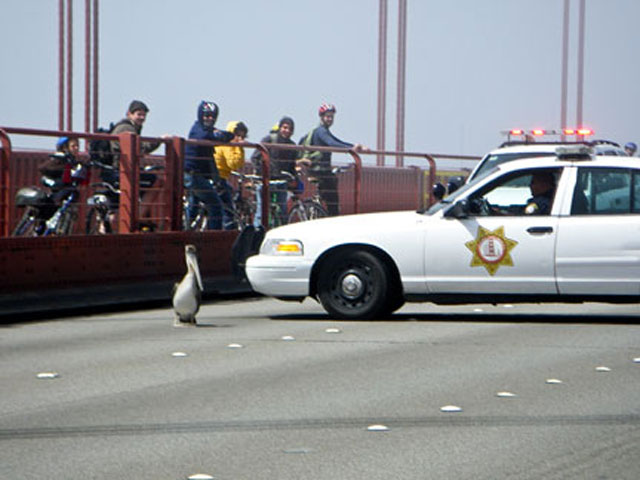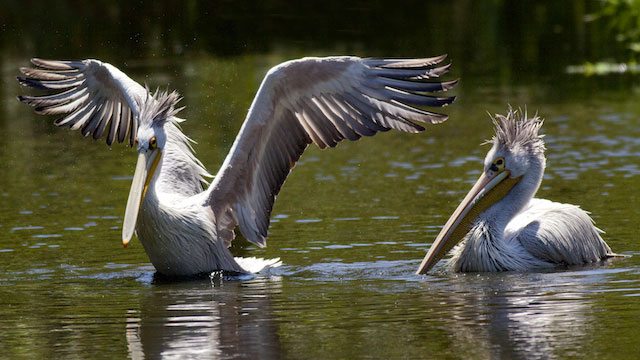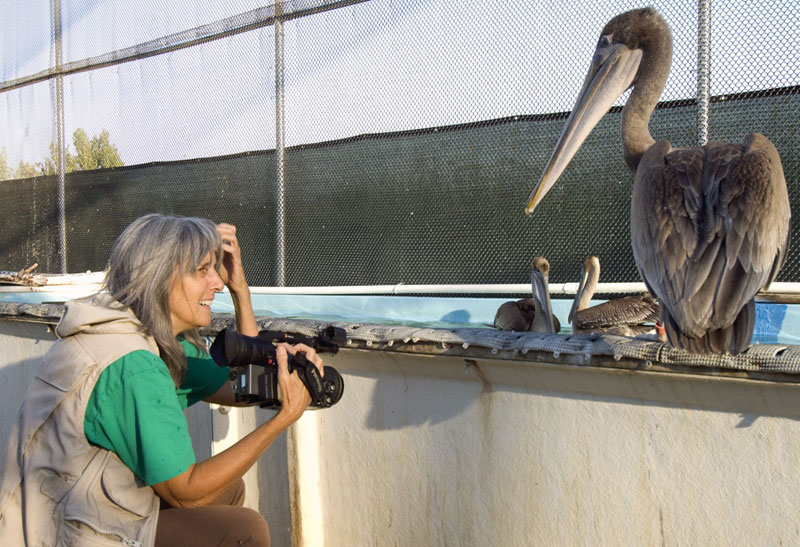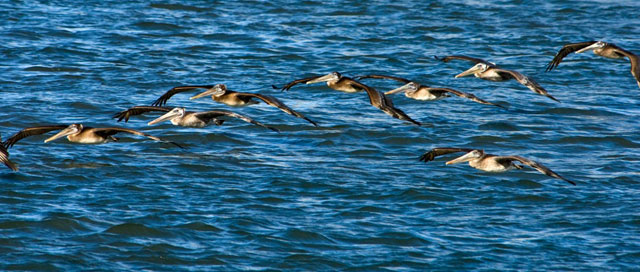Unlike pop stars, documentary filmmakers rarely have to grapple with crafting a follow-up to a mammoth hit. The Wild Parrots of Telegraph Hill, Judy Irving’s profound and moving 2003 portrait of Mark Bittner and his feathered friends, was embraced by San Franciscans immediately upon its release and by viewers everywhere when it aired a few years later on PBS’ Independent Lens series. Hike the Greenwich steps today and you’ll find tourists from around the world pining for a glimpse of the winged movie stars.

After Parrots took off, Irving remained alert to the winds that would bring her next project. Her approach is to pick up on a subject and pick up her camera; her joy is in not knowing where it will take her. Irving’s wonderful new film, Pelican Dreams, took flight when the North Beach filmmaker heard about the California brown pelican that landed on the Golden Gate Bridge in late 2009, tying up traffic. The injured bird provides the through-line for Irving’s documentary, which gracefully entwines informed commentary on the pelicans with an evocative personal essay about flight, freedom and the ever-increasing encroachment of people.
“I didn’t want to make a standard nature documentary, the kind that you see on TV,” Irving declares. “I didn’t want to make a science doc. I didn’t want to make an educational film. I wanted to tell a story about trying to get to know a wild animal, and can you get to know a wild animal? Can you get to know one of these flying dinosaurs? How close can you get and still keep them wild?”
Between Parrots and Pelican, Irving has perfected a style of personal filmmaking that leaves ample space for the viewer to think, breathe, meditate and feel. Actually, I suspect Irving will hate that last sentence.

“I didn’t want Pelican Dreams to be New-Agey, or a hippie spirituality kind of thing,” she says. “I’m not that way. I live in San Francisco. I don’t live in Marin. Sorry, Marin.” Irving laughs, and continues. “Working out the correct tone for this movie, the voice was very, very important to me and took forever. I literally did hundreds of sessions of test narration where I recorded myself in this editing room, right here in this chair, trying out lines. I would always edit the visuals first. The visuals have to take priority. Then I would try to find — what do I actually need to say here or do I need to say nothing? How little can I say? I experimented with lines that were more touchy-feely, you might say. I took them out. They didn’t work for me and they didn’t work for test audiences.”



